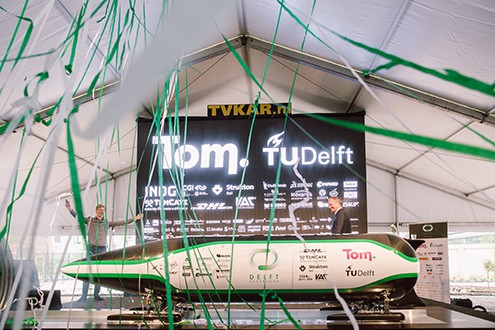TU Delft wins Hyperloop competition
Delft University of Technology has been awarded the top prize at SpaceX’s Hyperloop Pod Competition, which took place last weekend.

(Credit: TU Delft)
The Dutch university team’s pod was named ‘most innovative design’ at an earlier stage in the competition, which was first announced by SpaceX in June 2015. This latest phase finally saw student teams testing their designs out on SpaceX’s 1.2km test track, built just outside the company’s headquarters in Hawthorne, California.
“It was precisely this award that we had set our sights on,” said TU Delft team captain Tim Houter. “We tried to focus on every aspect and to create a pod that could easily be scaled-up. And our hard work has now been rewarded, it is fantastic.”
In total, 27 teams made it to the final competition stage, but just three (TU Delft, MIT and WARR Hyperloop from the Technical University of Munich) were allowed to compete on the Hyperloop track following structural tests, open-air runs and a vacuum chamber test. As well as taking the overall prize, TU Delft received the award for the best construction and design. WARR achieved the highest average speed, while the MIT team won the safety and reliability award.
Register now to continue reading
Thanks for visiting The Engineer. You’ve now reached your monthly limit of news stories. Register for free to unlock unlimited access to all of our news coverage, as well as premium content including opinion, in-depth features and special reports.
Benefits of registering
-
In-depth insights and coverage of key emerging trends
-
Unrestricted access to special reports throughout the year
-
Daily technology news delivered straight to your inbox










Water Sector Talent Exodus Could Cripple The Sector
Well let´s do a little experiment. My last (10.4.25) half-yearly water/waste water bill from Severn Trent was £98.29. How much does not-for-profit Dŵr...